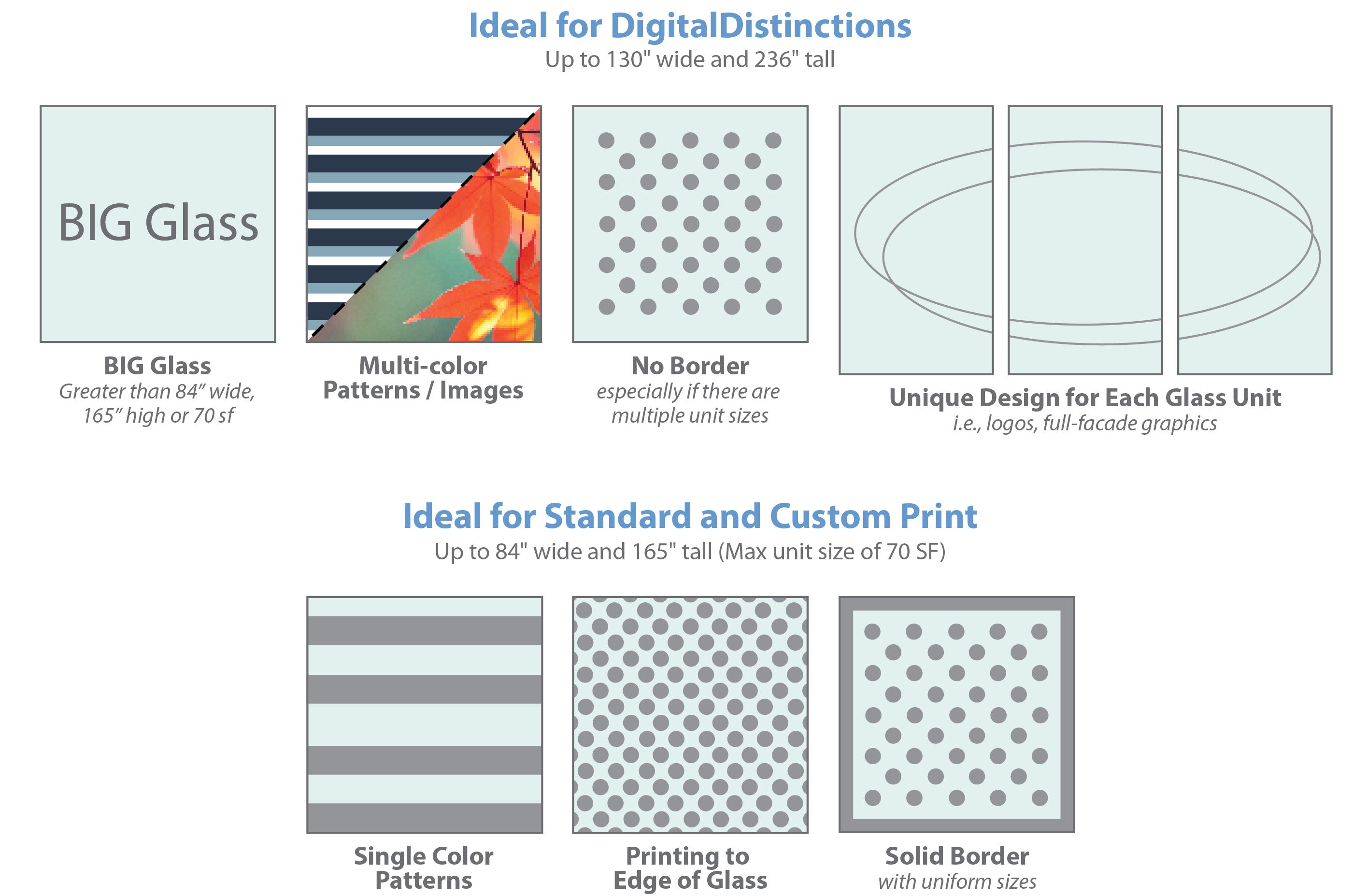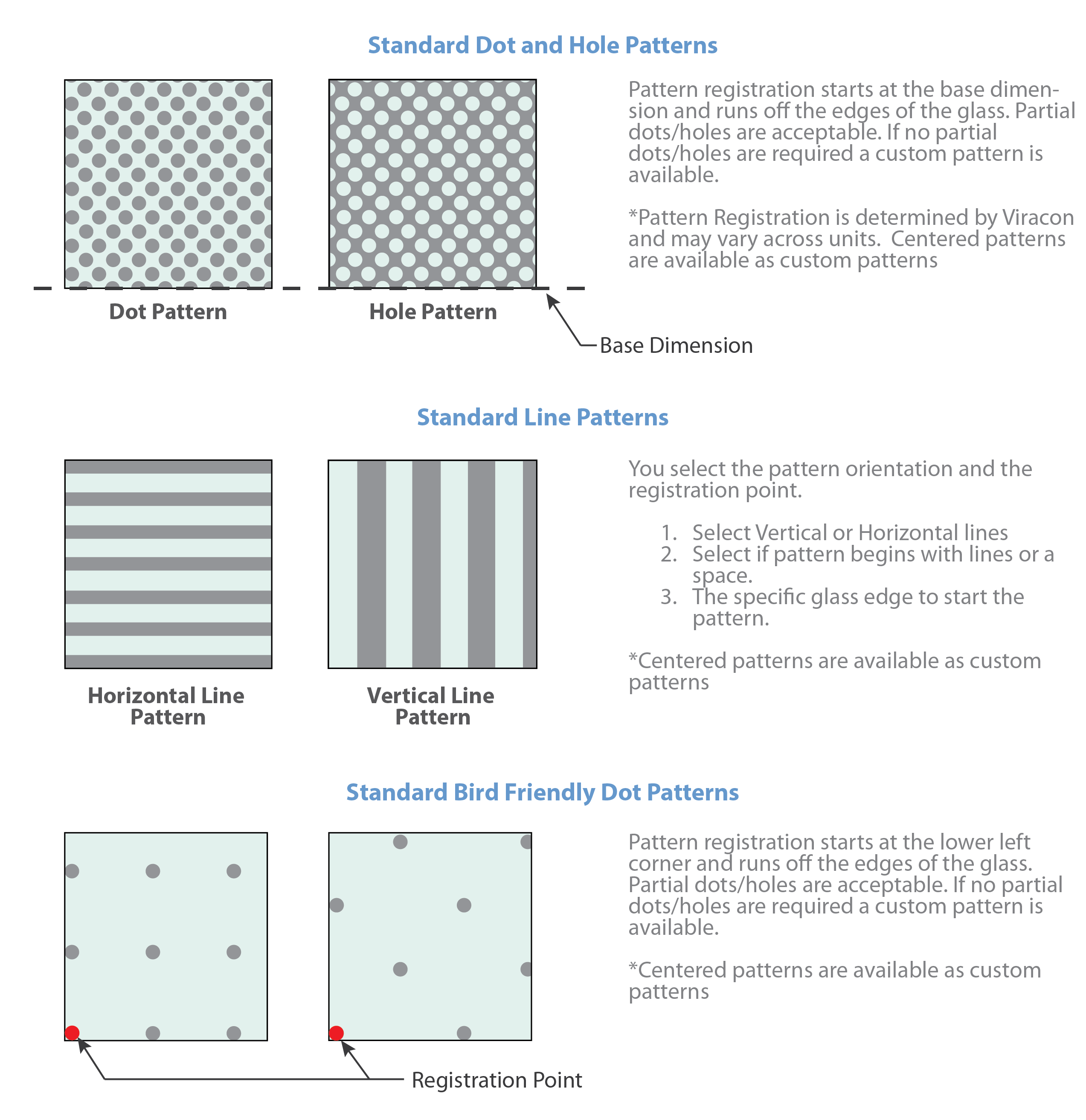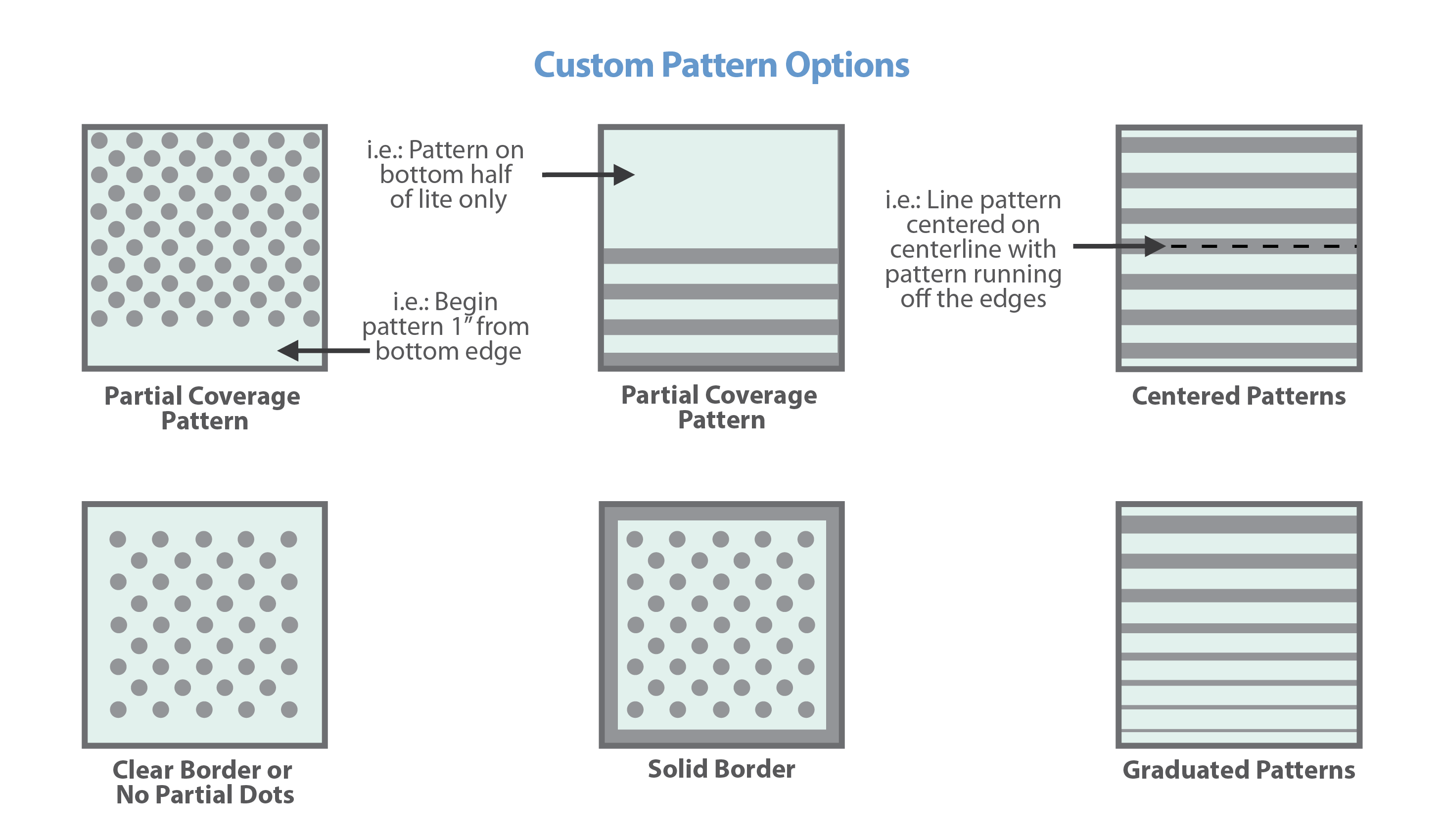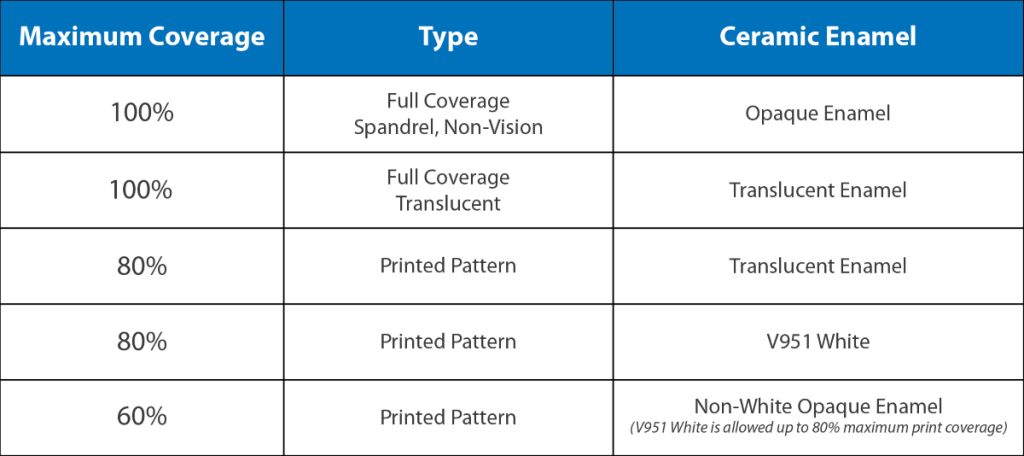Printing on glass starts with designing a pattern or image to be printed. The project architect or design team typically handle this task as part of the facade development process. Design considerations should include Viracon's printing process capabilities as well as the coverage and direction of the pattern. Details, including the orientation of the pattern, should be provided for each individual glass unit based on its size and location on the facade. This information can then be conveyed to Viracon through the glazing subcontractor to ensure consistency between the glass fabrication and installation documentation.
Ordering Printed Glass
Viracon can assist in determining whether a design works best with the digital printing or silk-screen printing process. In many cases, the design or product specified will lend itself to one of the processes. A few examples are shown below.
Standard Print Orientation and Registration
The orientation defines the direction of the pattern, such as horizontal lines or vertical lines. Registration identifies where to start the pattern. Below are the standard orientation and registration points for Standard Print patterns. Anything not shown below is considered a custom pattern and is subject to additional charges.
Custom Print Pattern Options
The following options are available with custom patterns, additional charges will apply.
Designing a Custom Pattern
The following guidelines are intended to assist in developing a pattern or image to be printed on glass using either a digital or silk-screen process.
Size
1/16” minimum dot, pixel or space
Coverage
The amount of the glass surface that can be printed varies based on the color and process.
* Maximum percentage of the surface that can be covered in any single square foot of area
** Not available for interior applications
** Not available with coatings on the same surface
Dual Surface Patterns
Placing a pattern or image on two surfaces within an insulating unit is feasible however extreme caution should be taken during the design process to minimize the potential for a moiré pattern to appear.
Specifying Printed Glass
Images may be applied to any surface except the exterior (#1) surface. A coating can be applied to the same surface as the printing.
Units with printing should be utilized in applications where the printed surface is protected from exterior elements. The units should not be installed in applications where the printed surface will be exposed to an outdoor environment.
Printing to Edge of Glass
Digital printing in combination with a Low-E coating, requires a minimum 3/8” (9.525mm) clear, enamel-free border around all edges. Silk-screen printing in combination with a Low-E coating does not require this clear, enamel-free border.
Submitting Patterns or Artwork to Viracon
Designs should be submitted to Viracon in the format and file types outlined in our Art File and CAD File Requirements.
Buyer shall be responsible for the accuracy of all documents, data, glass takeoffs, shop drawings, specifications, architectural drawings, and electronic design files furnished by Buyer to Viracon. Viracon shall not be liable for any errors or omissions in documents, data, glass takeoffs, shop drawings, specifications, architectural drawings, and electronic design files furnished by Buyer, including but not limited to drawings not drawn to scale, not accurately depicted glass sizes, not depicting glass edges, or that do not depict proper orientation of the glass. Buyer shall be responsible for obtaining copyrights to the images. logos or designs being sent to Viracon.
ALL DIGITALDISTINCTIONS, CUSTOM SILK-SCREEN PATTERNS AND CUSTOM VIRASPAN COLORS MUST BE APPROVED BY THE ARCHITECT OR BUILDING OWNER AFTER VIEWING A FULL SIZE MOCK-UP. AN ACKNOWLEDGEMENT FORM MUST BE SIGNED IF NO MOCK-UP IS ORDERED.





